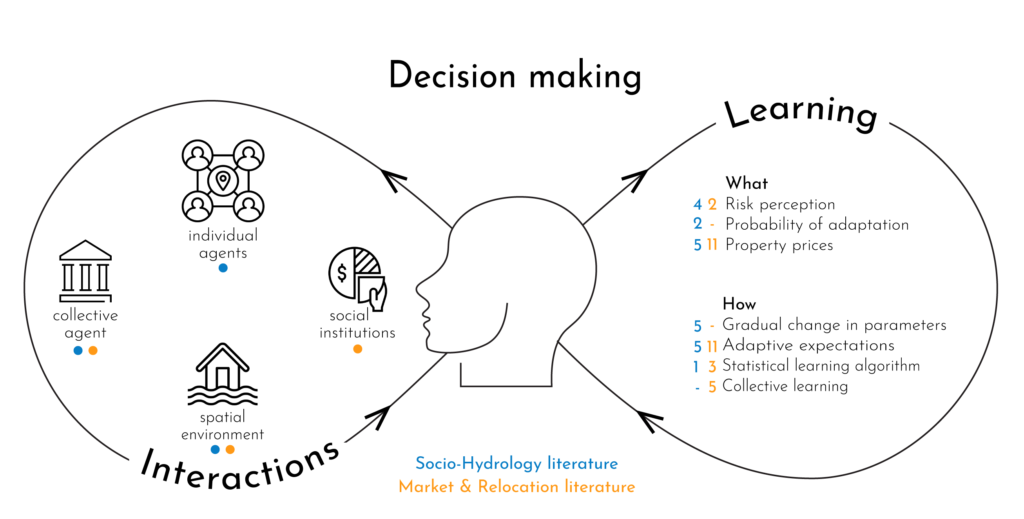Paper
- Tracing resilience, social dynamics and behavioral change: a review of agent-based flood risk models
- Socio-Environmental Systems Modelling, 2, 17938-17938.
- https://doi.org/10.18174/sesmo.2020a17938
Rapid urbanization and climate change exacerbate natural hazard risks worldwide. By 2050 about 80% of the world’s population is expected to live in cities which for historic reasons cluster along coasts and rivers that are prone to flooding. Impeded from eliminating these risks, policy-makers increasingly embrace resilience to explore what happens should a hazard hit.
Resilience in the view of Complex Adaptive Systems (CAS) is defined as the ability to withstand a shock and cope, learn, adapt, and (self)-reorganize during a recovery to continue long-term development despite adversities. It encompasses the traditional risk framework focused on direct damages.
In particular, these characteristics well suit Agent-Based Models (ABMs), that have seen an unprecedented rate of adoption to represent coupled human-flood interactions over the past years. Yet, replacing a representative rational actor dominant in climate policy model with a variety of behaviorally-rich agents that interact, learn and adapt is not straightforward.

Therefore, through the lens of CAS resilience, we systematically reviewed the ABMs that explore mid to long-term reactions of socio-economic systems to flood hazards.
